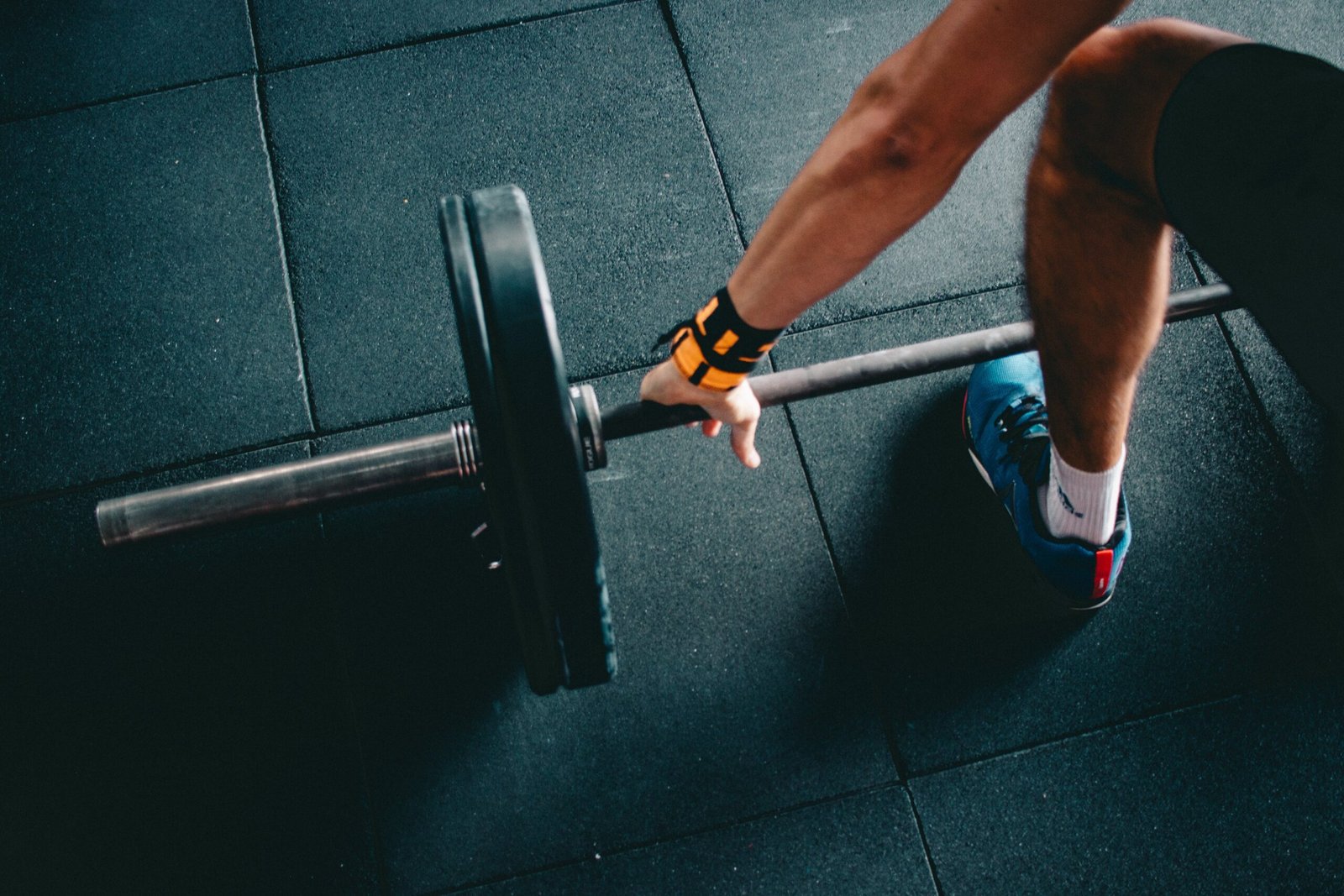As you age, it’s natural for muscle mass to decline, but that doesn’t mean you have to accept it. The good news is that there are specific exercises you can incorporate into your routine to help maintain muscle mass as you get older. By engaging in strength training exercises that target major muscle groups, such as squats, lunges, and push-ups, you can combat muscle loss and promote the growth and maintenance of lean muscle tissue. So, if you’re wondering how to keep your muscles strong and toned as you age, keep reading to discover the specific exercises that can help you achieve just that.
Importance of Maintaining Muscle Mass as We Age
As we age, maintaining muscle mass becomes increasingly important. Not only does it contribute to our overall strength and physical capability, but it also plays a crucial role in our health and well-being. By actively working to preserve and build muscle mass, we can experience a multitude of benefits that can greatly enhance our quality of life.
Prevention of age-related muscle loss
One of the primary reasons why maintaining muscle mass is crucial as we age is to prevent age-related muscle loss, also known as sarcopenia. Sarcopenia is a natural part of the aging process and is characterized by a gradual decline in muscle mass and strength. However, by engaging in regular exercise and incorporating strength training into our routine, we can significantly slow down the progression of sarcopenia and preserve our muscle mass.
Improved mobility and independence
Having a sufficient amount of muscle mass is essential for maintaining mobility and independence, especially as we get older. Strong muscles support our joints and provide the stability and balance necessary for daily activities such as walking, climbing stairs, and carrying groceries. By preserving muscle mass, we can continue to lead an active lifestyle and remain independent for longer.
Reduced risk of chronic diseases
Maintaining muscle mass has also been linked to a reduced risk of chronic diseases commonly associated with aging, such as diabetes, heart disease, and osteoporosis. Research has shown that having higher muscle mass is associated with better insulin sensitivity, improved cardiovascular health, and increased bone density. By prioritizing muscle mass maintenance, we can potentially lower our risk of developing these debilitating conditions and enjoy a higher quality of life as we age.
Factors That Influence Muscle Mass During Aging
Various factors can influence muscle mass during the aging process. Understanding these factors can help us make informed decisions and take proactive steps to maintain and preserve our muscle mass as we age.
Hormonal changes
Hormonal changes, particularly a decline in sex hormones such as testosterone and estrogen, can lead to a decrease in muscle mass. These hormonal changes are a natural part of the aging process and can contribute to the development of sarcopenia. However, regular exercise, especially resistance training, can help mitigate the impact of hormonal changes on muscle loss.
Sedentary lifestyle
Leading a sedentary lifestyle, characterized by minimal physical activity or prolonged periods of sitting, can accelerate muscle loss. When we don’t use our muscles regularly, they begin to atrophy, leading to a decrease in muscle mass. Incorporating regular exercise and staying active throughout the day can help counteract the negative effects of a sedentary lifestyle on muscle mass.
Poor nutrition
Nutrition plays a crucial role in maintaining muscle mass. Consuming a diet lacking in essential nutrients, particularly protein, can hinder muscle protein synthesis and contribute to muscle loss. To preserve muscle mass, it’s important to consume an adequate amount of protein, as well as a balanced diet rich in fruits, vegetables, whole grains, and healthy fats.
Chronic illnesses
Certain chronic illnesses and conditions, such as cancer, chronic obstructive pulmonary disease (COPD), and kidney disease, can cause muscle wasting and contribute to muscle loss. It’s important for individuals with these conditions to work closely with their healthcare providers to develop an appropriate exercise and dietary plan to help maintain muscle mass and minimize the effects of these illnesses on their physical well-being.

Benefits of Exercise for Maintaining Muscle Mass
Exercise, particularly resistance training, plays a vital role in maintaining and preserving muscle mass as we age. Engaging in regular exercise can offer a wide range of benefits that go beyond just muscle preservation.
Increased muscle protein synthesis
Exercise stimulates muscle protein synthesis, the process by which the body builds and repairs muscle fibers. By engaging in resistance training exercises, such as weightlifting or using resistance bands, we can promote muscle protein synthesis and enhance our muscle mass.
Enhanced muscle strength and function
Regular exercise, including both resistance training and aerobic exercises, helps improve muscle strength and function. Strong muscles not only allow us to perform daily activities with ease but also contribute to better posture, balance, and overall physical performance.
Improved bone density
Exercise, particularly weight-bearing exercises and resistance training, is crucial for maintaining and improving bone density. As we age, our bones become more susceptible to osteoporosis and fractures. By engaging in exercises that put stress on our bones, such as weightlifting or brisk walking, we can stimulate bone growth and maintain healthy bone density.
Types of Exercises to Maintain Muscle Mass
To effectively maintain muscle mass, it’s important to incorporate a variety of exercises into our fitness routine that target different muscle groups and meet different fitness goals.
Resistance training
Resistance training exercises involve working against resistance, either using weights, resistance bands, or just your body weight. These exercises help build strength, increase muscle mass, and improve overall body composition. Weightlifting, resistance band workouts, and bodyweight exercises like push-ups and squats are all examples of resistance training exercises.
Aerobic exercises
Aerobic exercises, also known as cardiovascular exercises, help improve cardiovascular health, burn calories, and maintain overall fitness levels. While aerobic exercises may not directly build muscle mass, they contribute to overall health and help maintain a lean body composition. Examples of aerobic exercises include brisk walking, cycling, swimming, and dancing.
Flexibility and balance exercises
Flexibility and balance exercises are essential for overall mobility and preventing injuries. Stretching exercises, yoga, tai chi, and Pilates are all excellent choices for improving flexibility, balance, and core strength. These exercises also help to maintain muscle elasticity and joint mobility.

Resistance Training Exercises
Resistance training exercises are particularly effective for building and preserving muscle mass. Incorporating these exercises into your fitness routine a few times a week can have significant benefits for maintaining muscle mass as you age.
Weightlifting
Weightlifting involves using free weights or weight machines to perform exercises that target specific muscle groups. It is a highly effective way to build muscle strength, increase muscle size, and enhance overall physical performance. Beginners can start with lighter weights and gradually increase the load as they become more comfortable and experienced.
Resistance bands
Resistance bands are versatile and affordable tools that can be used for resistance training anywhere, whether at home or the gym. They provide resistance when stretched, allowing you to work your muscles effectively. Resistance band exercises can be modified to target different muscle groups and accommodate various fitness levels.
Bodyweight exercises
Bodyweight exercises are exercises that rely solely on your body weight for resistance. They can be performed anywhere, without the need for equipment, making them accessible for individuals of all fitness levels. Examples of bodyweight exercises include push-ups, squats, lunges, planks, and burpees. These exercises engage multiple muscle groups simultaneously, making them an efficient way to build and maintain muscle mass.
Aerobic Exercises
While resistance training is crucial for muscle maintenance, incorporating aerobic exercises into your fitness routine is equally important for overall health and fitness.
Brisk walking
Brisk walking is a low-impact aerobic exercise that is easily accessible to people of all fitness levels. It helps improve cardiovascular health, burn calories, and maintain overall fitness. Aim for at least 30 minutes of brisk walking most days of the week to reap the benefits.
Cycling
Cycling is another excellent aerobic exercise that can be done indoors on a stationary bike or outdoors on a bicycle. It is a low-impact activity that helps improve cardiovascular fitness, strengthen leg muscles, and burn calories. Cycling can be adjusted to suit different fitness levels and provides an enjoyable way to maintain muscle mass and overall fitness.
Swimming
Swimming is a full-body workout that is gentle on the joints, making it an excellent option for individuals with joint issues or injuries. It provides resistance and helps build muscle strength while improving cardiovascular fitness. Whether swimming laps or participating in water aerobics classes, swimming is a great way to maintain muscle mass and overall fitness.

Flexibility and Balance Exercises
Flexibility and balance exercises are often overlooked but are crucial for preserving mobility, preventing falls, and maintaining muscle elasticity. Incorporating these exercises into your fitness routine can greatly enhance your overall physical well-being.
Yoga
Yoga is a holistic practice that combines physical postures, breathing exercises, and meditation. It improves flexibility, balance, and core strength while promoting relaxation and stress reduction. Whether practicing yoga at home or attending classes geared towards seniors, it offers a multitude of benefits for maintaining muscle mass and overall health.
Tai Chi
Tai Chi is a gentle martial art that focuses on slow, flowing movements, deep breathing, and meditation. It enhances balance, coordination, and flexibility while promoting relaxation and mindfulness. Tai Chi is particularly beneficial for seniors as it can be adapted to different fitness levels and helps maintain strength and stability.
Pilates
Pilates is a low-impact exercise method that focuses on strengthening the core muscles, improving flexibility, and enhancing overall body alignment. It combines elements of resistance training, stretching, and controlled movements to work the entire body. Pilates exercises can be modified to suit different fitness levels and offer a great way to maintain muscle mass and overall physical function.
Exercise Guidelines for Aging Adults
When engaging in exercise to maintain muscle mass as we age, it’s important to follow some guidelines to ensure safety and effectiveness.
Consultation with healthcare provider
Before starting any new exercise program, it’s important to consult with your healthcare provider, especially if you have any underlying health conditions or concerns. They can provide personalized advice and guidance based on your specific needs and medical history.
Start slowly and progress gradually
Begin your exercise routine at a comfortable level and gradually increase the intensity or duration as your fitness improves. Starting slowly and progressing gradually helps prevent injuries and allows your body to adapt to the new demands.
Include both strengthening and aerobic exercises
To effectively maintain muscle mass, it’s important to include a combination of both strengthening and aerobic exercises in your fitness routine. Resistance training exercises should target all major muscle groups, while aerobic exercises help improve cardiovascular health and maintain overall fitness.
Balance different modes of exercise
Incorporate a variety of exercises into your routine to work different muscle groups and prevent boredom. By balancing resistance training with aerobic exercises, flexibility, and balance exercises, you can maintain muscle mass, improve physical function, and enjoy a well-rounded fitness routine.

Nutrition and Muscle Mass Maintenance
Exercise alone is not enough to maintain muscle mass as we age. Proper nutrition also plays a crucial role in preserving muscle mass and supporting overall health.
Adequate protein intake
Protein is essential for muscle growth, repair, and maintenance. As we age, our bodies may require slightly more protein to counteract muscle loss. Aim to include protein-rich foods such as lean meats, fish, poultry, eggs, legumes, and dairy products in your diet. If needed, consider protein supplements to meet your daily protein requirements.
Balanced diet with essential nutrients
A balanced diet that includes a variety of fruits, vegetables, whole grains, and healthy fats is essential for maintaining overall health and supporting muscle mass. Ensure you are getting a sufficient intake of vitamins, minerals, and antioxidants by eating a colorful and varied range of foods.
Consideration of calorie intake
While it’s important to consume enough calories to support physical activity and maintain muscle mass, it’s equally important to avoid excessive calorie intake. Balance your calorie intake with your activity levels and aim for a healthy weight range to support optimal muscle maintenance and overall health.
Conclusion
As we age, maintaining muscle mass becomes increasingly important for overall health, mobility, and independence. Regular exercise, particularly resistance training, is crucial for preserving and building muscle mass. Incorporating a variety of exercises, including aerobic, flexibility, and balance exercises, into your fitness routine ensures a well-rounded approach to muscle maintenance. Alongside exercise, proper nutrition and consultation with healthcare professionals play a vital role in maintaining muscle mass as we age. By prioritizing muscle mass maintenance and adopting a proactive approach, you can continue to enjoy an active and independent lifestyle well into your golden years.

Losing weight and keeping it off can be a challenge. I’m here to show you good-tasting foods and drinks that help you lose weight, and are enjoyable to eat.



